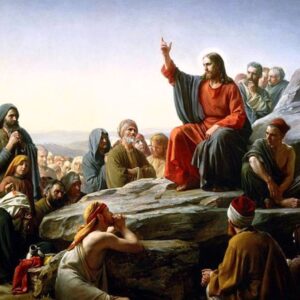Merry Christmas 2024: History, Traditions and the Meaning Behind December 25. As we approach the festive season, many people around the world begin preparing for one of the most celebrated festivals of the year – Christmas. Whether it is the deep pine tree-filled air, the twinkling lights adorning homes, or the joyous music that fills the air, the spirit of Christmas is present everywhere. In this blog post we will explore the significance, history and traditions of Christmas, and take a deep look at the theories as to why this holiday is celebrated on December 25. Looking ahead, we also take a look at what to expect this season as we say “Merry Christmas 2025”.
Significance of Christmas:

Christmas, which is primarily celebrated as the birth of Jesus Christ, has deep spiritual significance for Christians around the world. It is believed to be the celebration of the incarnation of God in the form of Jesus Christ, which symbolizes the victory of light over darkness and the arrival of hope in the world. Christians believe that the day is significant not just for the birth of Jesus Christ but also for the message of love, peace and goodwill it conveys. The festival promotes the spirit of the Festival of Gifts, which becomes synonymous with this season.
Beyond its religious meaning, Christmas has also evolved as a cultural and commercial phenomenon. Many people, no matter what religion they belong to, observe various festive rituals during this season, enjoying gatherings and sharing in the joy of gifts. From charity workers to family reunions, the spirit of Christmas is used to promote a sense of community and togetherness.
The Historical History of Christmas:
Although the early origins of Christmas are shrouded in mystery, it is widely believed that the holiday traces the early origins of Christianity. The first recorded celebration of Christmas on December 25 was in Rome in 336 AD, during the reign of Emperor Constantine. Prior to this theory, early Christians did not celebrate the birth of Jesus; instead, Easter was the main Christian feast, commemorating Christ’s death and resurrection.
The selection of December 25 coincided with stable pagan festivals, particularly the Roman Saturnalia, which coincided with the winter solstice, a time when the days are longer. Some historians believe that early Christians tried to adopt and repurpose these stable celebrations as a means of converting pagans to Christianity. The conversion of Christians paved the way for such vestiges as feasting, gift-giving, and even tree ornaments, which have now become principle parts of Christmas celebrations.
In the ensuing revelations, different cultures contributed their unique customs to the holiday, enriching the fabric of Christmas as it mingled with civilization around the world. From the Yule people in Europe to the lighting of the menorah during Hanukkah, the influence of Christmas as a global celebration has continually evolved over time.
Traditions associated with Christmas:
Christmas traditions vary widely in nature, yet many have common themes of joy, generosity, and family. Here are some of the most prevalent customs:
Decorating the Christmas Tree:

One of the most beloved Saudis involves decorating evergreen trees with ornaments and ribbons. This ritual is likely linked to ancient pagan rituals that coincided with the winter solstice. Today, families decorate their trees for ornaments, often with the help of old buildings that housed a star or angel on top.
Gift-giving:
The act of gift-giving is one of the essential rituals of the Christmas season, symbolizing the gifts the Magi gave to Jesus. It promotes generosity and strengthens cooperation among family and friends. This tradition has evolved to include a variety of gifts, from homemade rockets to grand gifts that go to the door.
Christmas Carols:
Singing carols has become an age-old tradition during the Christmas season. These songs convey a message of joy, hope, and celebration of the birth of Christ. Carols have been sung since the Middle Ages and today, mass singing is the organization of celebrations at home, business centers, and markets.
Festive Feasts:
A common vice of Christmas celebrations is to have a collective meal with the family. Every culture has its own unique cuisine – be it turkey in the United States, goose in Germany, or fish in Italy. These customs explain the spirit of unity and gratitude.
Advent Calendars and Wreaths:
The season of Advent, the period before Christmas, is marked by special calendars and wreaths. Advent calendars offer a daily surprise until December 25, while wreaths symbolize the continuing cycle of life, with floral candles representing hope and anticipation.
Why is Christmas celebrated on December 25?:
Reasons for celebrating Christmas on December 25
December 25 can be linked to several historical artifacts. One prominent theory links this date to the Roman festival Saturnalia, which celebrated the winter solstice and was accompanied by festivities and revelry. The Christian Church may have chosen this date to exalt Christianity amid popular pagan revelry.
Another important link comes from the ancient belief that Jesus was conceived on March 25 (the Feast of the Annunciation), a date that corresponds to December 25, nine months after conception. This alignment connects Jesus’ birth to both the time of creation and his death and resurrection.
Looking Ahead: Merry Christmas 2025
While we embrace the warmth and joy of Merry Christmas 2024, it is also important to consider the evolving nature of Christmas traditions as we move toward Merry Christmas 2025. The way we celebrate is constantly changing, whether it is through the inclusion of virtual celebrations in pandemic times, sustainable and eco-friendly practices, or through the blend of modern elements with traditional values.
Hopefully, no matter how we celebrate Christmas in the future, it will continue to be based on the core principles of kindness, unity, and joy. Communities will continue to find ways to connect, celebrate and share the true spirit of the season as they embrace another year of festive cheer.
Frequently Asked Questions About Christmas
Q: What is the history of Santa Claus?
A: The modern-day Santa Claus has its origins in St. Nicholas, a 4th-century bishop known for his generosity and gift-giving. Over time, his legacy evolved into the jolly figure we celebrate today, characterized by a red outfit and a sled (Contributor to Wikimedia projects, 2007).
Q: Why do we decorate Christmas trees?
A: Bringing evergreen trees indoors dates back to ancient pagan traditions of celebrating winter. The practice was later incorporated into Christmas celebrations as a way to symbolize life and renewal during the darkest days of winter.
Q: What are some Christmas traditions around the world?
A: Global Christmas traditions vary widely. For example, in Italy, children await La Befana, a witch-like figure who brings gifts. In Mexico, families celebrate with Las Posadas, which reenacts Mary and Joseph’s search for a place to live.
Question: How can I make Christmas eco-friendly?
Answer: Consider using sustainable decorations, reducing waste by wrapping gifts in cloth or recycled materials, and selecting a living Christmas tree that can be replanted after the holiday.
In short, Christmas is a time for reflection, connection, and celebration. Whether you say “Merry Christmas 2024” or “Merry Christmas 2025,” embracing the spirit of the season will always bring people together in joy and love.
This article presents a comprehensive overview of Christmas, ensuring that each section ties together the significance, traditions, and ongoing evolution of this beloved holiday.


